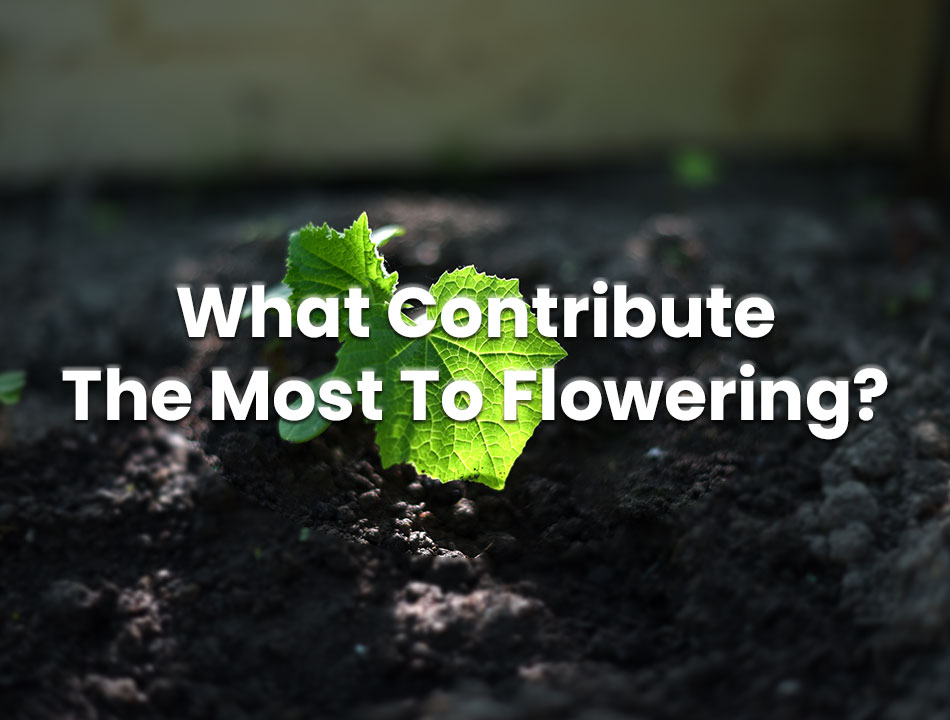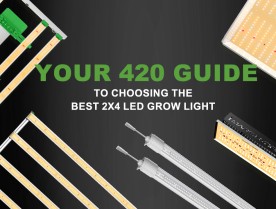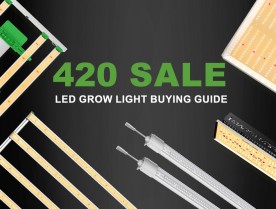
Indoor growing has become increasingly popular in recent years and for good reason. Growing plants indoors allows you to have fresh produce year-round, regardless of the weather outside. However, growing plants indoors also come with its own set of challenges, including providing the right amount and quality of light for your plants. When it comes to the flowering stage, two features of grow lights are particularly important: the rich red and the high photosynthetic photon flux density.
In this post, we'll explore these features in more detail and discuss how they can help you create optimal conditions for your plants during the flowering stage.
The Rich Red Light In The Light Spectrum
The red light in the light spectrum plays a crucial role in the flowering stage of plant growth. It stimulates the production of plant hormones like auxin and gibberellin, which promote flowering and fruiting.

What is Red Spectrum
The red spectrum is a range of electromagnetic radiation with wavelengths between approximately 620 to 700 nanometers that appears as the color red to the human eye.
In plant cultivation, the red spectrum plays a critical role in the growth and development of plants. This is because red light is essential for photosynthesis, the process by which plants convert light into energy. Red light is specifically absorbed by the pigment chlorophyll, which is used to create energy for the plant.
The red spectrum is also crucial for the flowering and fruiting stages of plants. The timing, intensity, and duration of red light exposure can affect the growth and development of plants, as well as their overall quality and yield.
Growers can use different types of lighting sources, such as LEDs, to provide plants with the necessary amount of red light for optimal growth. In addition, using red light in combination with other colors of the spectrum can provide additional benefits to plants, such as increased plant growth, disease resistance, and enhanced flavor and aroma.
Therefore, if you want to optimize the plant's growth and production, you need to understand the importance of the red light.
Red Light, Deep Red Light, Far Red Light, and Infrared Light

Red light has a wavelength range of approximately 620 to 700 nanometers, with the most common wavelengths being 630 nm (orange-red) and 660 nm (deep red), specifically absorbed by the pigment chlorophyll, and have been shown to promote the growth of stems and leaves and stimulate flowering in some plants.
Far-red light, on the other hand, has a wavelength range of approximately 680 to 700 nanometers and has different effects on plants than red light. Far-red light is known to promote the elongation of stems and inhibits flowering in some plants. It can also trigger the germination of seeds and induce the shade avoidance response in plants, where plants grow taller and lean towards the light source to avoid being shaded by other plants. In horticulture, far-red light is used in combination with red light to optimize plant growth and development.
Infrared light has a wavelength range beyond 700 nanometers and is not visible to the human eye, in which near-infrared light has a wavelength between 700 and 1400 nm, while mid-infrared light has a wavelength between 1400 and 3000 nm, and far-infrared light has a wavelength between 3000 and 10000 nm. It is commonly used in a range of applications, such as remote controls and thermal imaging. In plant cultivation, infrared light has been shown to promote photosynthesis, increase the yield of crops, and enhance the quality of plant products. It can also be used to provide heat to plants, as it is a form of radiant heat that can penetrate plant tissues without damaging them. Infrared light is often used in greenhouse farming to regulate temperature and promote plant growth.
The High Ratio of Red Light in LED Grow Lights For Plants

When weed plants receive a high ratio of red light, it triggers a hormone response (phytochrome) that promotes the development of flowers, which is known as the flowering stage. Phytochrome is responsible for a range of plant developmental processes, including seed germination, leaf expansion, and the timing of flowering.
The high ratio of red light in LED grow lights can also increase the yield and potency of weed plants. This is because red light promotes the production of chlorophyll, which is essential for photosynthesis, and therefore increases the overall biomass of the plant. A higher biomass, in turn, leads to a higher yield of flowers. Besides, studies have shown that a higher ratio of red light can also influence the chemical composition of the flowers, leading to increased potency and the production of secondary metabolites, such as terpenes and cannabinoids, which can enhance the weed plants' medicinal and recreational value.
In addition, red light can promote stem elongation and inhibit the effects of blue light, which can have a dwarfing effect on plants. This makes it an important tool for controlling plant height and promoting vertical growth in cannabis crops.
Moreover, far-red light is important for regulating the timing of flowering in cannabis plants. It works in opposition to red light, and its presence can delay the onset of flowering. This property can be useful for growers who want to manipulate the flowering time of their plants.
Therefore, including a high ratio of red light in LED grow lights is essential for the flowering stage of weed. Growers can use LED grow lights with a high ratio of red light to provide the necessary light conditions for optimal weed growth and development.
The High Photosynthetic Photon Flux Density

During the flowering stage, weed plants require a high amount of energy to produce flowers, which requires a high PPFD. This is because photosynthesis is the process by which plants produce energy in the form of carbohydrates, which are used to fuel growth and flower development. Without sufficient light intensity, photosynthesis is limited, and the plant will not be able to produce the necessary energy to support flower growth.
In addition to providing energy for flower development, a high PPFD can also influence the quality and quantity of the flowers produced. Studies have shown that a higher PPFD can lead to increased yields, improved flower quality, and higher levels of cannabinoids and terpenes. This is because the high light intensity stimulates photosynthesis and promotes the production of secondary metabolites, such as THC and CBD.
How Much PPFD is the Best For the Flowering Stage?
The optimal PPFD for the flowering stage of weed depends on several factors, including the strain being grown, the growing space, and the type of grow light being used. However, generally speaking, weed plants in the flowering stage require a PPFD of between 800 and 1000 micromoles per square meter per second (µmol/m²/s) for optimal growth and yield.
If possible, provide a high PPFD of around 1000~1300 µmol/m²/s during the last week of flowering to help promote the development of large, dense buds with high levels of THC and other cannabinoids.
On the other hand, if you utilize CO2 in cultivation, increase the PPFD requirement to 1000-1200 µmol/m2/sec during the flowering stage and 1200-1500 µmol/m2/sec during the last flowering week.
Cautions About Red Light and PPFD in Full Spectrum Lights

Red light is most effective when used in conjunction with full-spectrum LED grow lights. While full-spectrum lights contain red light, not all of it is sufficient to meet the growth requirements of the flowering period. As a result, it is essential for growers, especially newcomers, to pay attention to the red light spectrum in their grow lights. Some full-spectrum grow lights that have little red light may produce excellent growth during the vegetative phase but can perform poorly during the flowering phase, resulting in a significant reduction in yield. Therefore, selecting a high-quality full-spectrum LED grow light with a suitable amount of red light is critical for promoting optimal growth and yield during the flowering stage.
It also is important to exercise caution and control over the growing environment when utilizing high PPFD levels in grow lights to avoid issues such as burning and bleaching.
Conclusion
In conclusion, red light and a high photosynthetic photon flux density are the two most important features of grow lights during the flowering stage of plant growth. A high ratio of red light in full-spectrum LED grow lights can increase yield, and potency, and regulate plant height. While a high photosynthetic photon flux density is necessary to provide the energy needed to produce flowers during the flowering stage. As such, understanding the importance of a high ratio of red light and high PPFD is crucial for indoor growers to achieve optimal conditions and yield for their plants.







